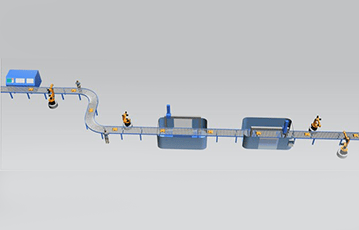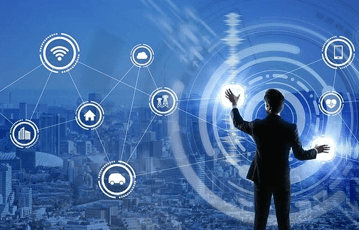Creating a virtual replica for process understanding

A digital twin is a virtual replica of a physical product, process, or system. With various technologies like IoT, Data Science, 3D modeling, Machine Learning (ML), and Artificial Intelligence (AI) collaborating, digital twin helps create a virtual image of a physical world together with all its relationships. It acts as a bridge between the physical and digital worlds by collecting real-time data about the physical item using sensors.
The digital duplicate, thus created using this data, is then used to understand the physical product, analyze its working, manipulate various parameters to obtain varying outputs and use the same to help optimize its production and usage. By comparing the real versus the expected values, one can get a better insight into either underperforming or performing incorrectly. This enables changes to be made accordingly by operations to achieve ideal operations.
By implementing a digital twin, one can achieve faster operational readiness as machines used to create a virtual replica of the actual physical asset more quickly. Further, there is no real production needed in a digital representation. Thus the results of the actual process can be obtained much quicker. Data-oriented, reading the data, and drawing inference become more accessible and helps implement solutions drastically at reduced costs.
Using digital twins for training ensures operators know all safety procedures before operating the real assets. Also, being trained in the virtual environment with a replica of what they would find when they get working on the whole machinery makes it easier for them to envision what they would be facing when they get to the actual work, helping them stay better prepared for emergencies that may arise while working on the fundamental asset. A digital twin can also help prepare for the most adverse situation and what if scenarios that may occur while on the field, helping train the team with the exact steps they may need to perform if such a problem occurred which would also help reduce the time taken to recover from the case if it happen.
GE’s Dr. Colin J. Parris breaks down operation of a digital twin in three stages:
• See. The system learns through operational and environmental data to update users of potential problems.
• Think. The digital twin assesses historical data and runs simulations to reason out options based on the most optimal choices.
• Do. The machine informs the user regarding what action is being executed either manually or through an app downloaded on the edge.


Dr. Colin J. Parris, GE explains how digital twins can be broadly divided into four categories:
Part twins: Deliver early warning about problems and tells you about the actual failures you will encounter.
Product twins: Optimize the remaining life of any asset against maintenance costs.
Process twins: Find ways to optimize field engineers to maximize utilization.
System twins: Seek ways to optimize within many key performance indicators (KPIs) and balance things such as revenue against the remaining life of the system or maintenance costs.
At AIGC, we help our customers design, simulate, validate, and even execute the digital plant asset. We also help create a single platform to integrate seamlessly all related documents with their respective digital support. This allows the end-user to reach any information quickly and much faster. We help contextualize data for the industries to obtain better insights from the data they have already gathered. Through our digital twin services, we provide our clients with a single-window to create and view full project information, from KPI’s, project status, to even visualization, and everything else in between.
What we offer
AIGC develops digital twin for a project in any type of industry which includes plant and process units design, material and contracts procurement, construction, precommissioning and commissioning. The 3D model can be a good source to build such a digital twin by integrating it with all project design basis, equipment specification sheets, procurement orders, inspection reequipments and field testing reequipments and records.
AIGC develops operations digital twin for plants and factories in any type of industry which includes monitoring and controlling, planning and scheduling, and various methods of production optimization. The project digital twin can be a good source to extend its use and augment with more capabilities to be an operational digital twin.
AIGC offers manufacturing factories a digital twin that allow simulation of changes at the shop floor without interruption to operations. This includes for example a sudden increase in production demand within a short period where the company has to increase production by analyzing the current process flow, and resource capacity and its utilization. It has to decide whether current resources are enough to reach the expected demand or additional resources are required.



